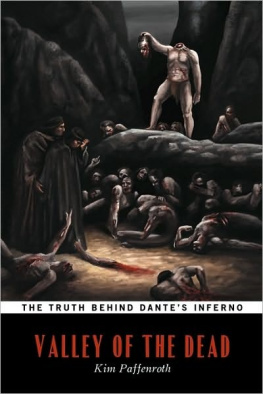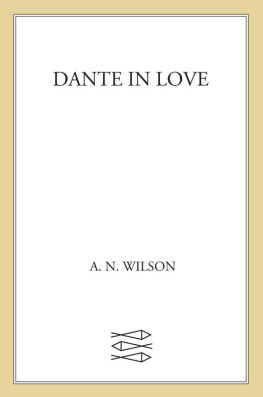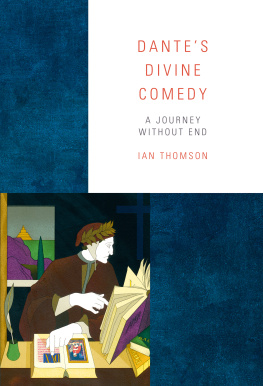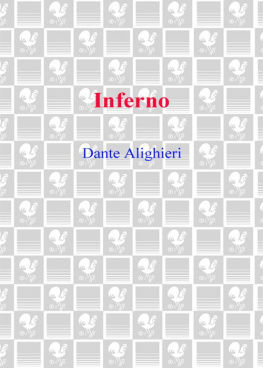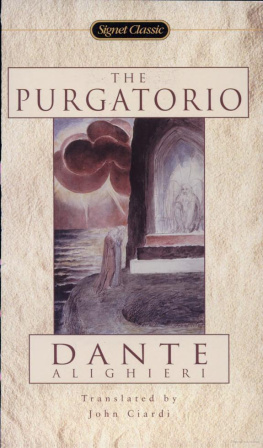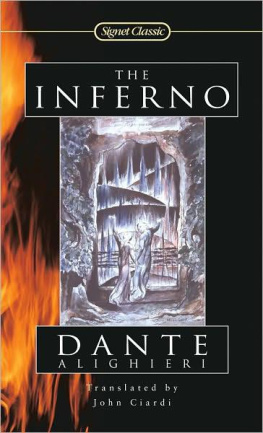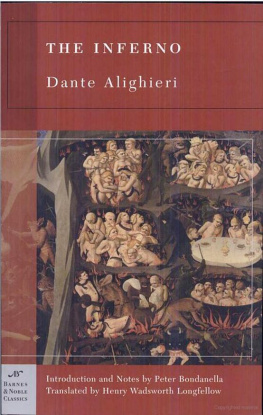
Valley of the Dead
Kim Paffenroth
Published by Permuted Press atSmashwords.
Copyright 2010 Kim Paffenroth
www.PermutedPress.com
Such torment and sadness
That overwhelms like madness
So fearful and intense
It burns inside
Judas Priest, Revelations
Timeline of Dantes Life
1265 - Born in Florence, Italy
1274 - Sees Beatrice Portinari for the firsttime
1283 - Marries Gemma Donati; they have fourchildren
1289 - Fights in the Battle of Campaldino
1290 - Beatrice dies
1292 - Begins writing The New Life(La Vita Nuova)
1295 - Joins the guild of apothecaries andbecomes active in Florentine politics
1302 - Banished from Florence; sentenced tobeing burned alive should he return
1302-1319 - Exact whereabouts unknown
1321 - Dies in Ravenna, Italy
Acknowledgments
Once again, my primary beta reader has beenRobert Kennedy, who never failed to give prompt and detailedcomments on each chapter as I progressed. A new beta reader thistime was Christine Morgan, a fine author in her own right, whosefeel for action scenes and dialogue is keen and exacting; sheoffered many improvements.
Certain fact checking, answering of technicalquestions, and general encouragement was generously provided bycoteries of the knowledgeable and charming, within both theacademic and horror communities Jerrod Balzer, Mike Brendan,Brian Brown, Phil Cary, Teresa Delgado, John Goodrich, KarenKoehler, Michele Lee, Michelle McCrary, Bryon Morrigan, Mark Orr,Elena Procario-Foley, Paul Puglisi, Rich Ristow, Mark Samuels, JohnUrbancik, and Doug Warrick.
It is one of my morbid habits I have followedwith all my books, both nonfiction and fiction, that once I get agood chunk of the work done enough that the project seems headedtoward completion I then ask someone if they would complete thework in the event I die before finishing it. For this volume, GaryBraunbeck graciously agreed to my morbid request, but it looks asthough youll have to settle for my more meager talentsthroughout.
Thanks to all my teachers and students overthe years who have helped me better understand Dantes poem. Untilrecently, this novel would not have been the outcome I expectedfrom all that reading and studying, but I hope it is a worthytribute to all their work, as well as to Dante himself.
The quotations from Inferno at thebeginning of each chapter are taken from the Longfellowtranslation, now public domain and available at such sites aseverypoet.com.
Thanks again to the lads of Judas Priest forallowing their lyrics to grace the beginning of this book, as theyhave allowed their words to preface many of my nonfiction works. Idont think they were the main inspiration for my obsession withdarkness and evil, but over the years they definitely have been oneof my favorite purveyors of such imagery.
Kim Paffenroth
Cornwall on Hudson, NY
November 2009
Prologue
For the last nineteen years of his life, theItalian poet Dante Alighieri was exiled from his native city ofFlorence. In these years, he wrote his most famous poem, TheDivine Comedy, which is still regarded as one of the greatestworks of world literature and of Christian theological speculation.The poem is an enormous epic divided into three volumes, each ofwhich describes one of the three realms of the Christian afterlife Inferno (Hell), Purgatorio (Purgatory), andParadiso (Paradise or Heaven). The Inferno is themost famous of the volumes, and is still read by many Americanundergraduates as part of a religion or literature course. Eventhose of purely secular tastes and background are fascinated andappalled by its graphic, ghastly, but hauntingly beautiful andunforgettable images. Also, I think, they pick up on the power thepoem draws from being so intensely personal. Dantessimultaneous anger and love for his hometown, his nation, and hischurch can easily be heard throughout his writing, while Boniface,Beatrice, and many other real people in Dantes life not tomention Dante himself all appear as characters in theComedy.
Its the intensely personal aspect of Danteswriting easily observable by any first-time student and endlesslyanalyzed and praised by lifelong scholars that started me downthe path of reconstructing the events of this story. Dante fillsall three volumes of his greatest poem with facts and images fromhis personal experiences Beatrices beautiful eyes, a baptismalfont he had broken in a church, a bloody military battle in whichhe had fought, along with hundreds of other minute details somebeautiful, some horrible, some trivial. How else could he write sopowerfully and convincingly? With that being verifiably the case,the conclusion seems almost unavoidable: during his years of exileand wandering, when details of his whereabouts are lost and legendsabound, Dante must have actually seen the horrors on which he wouldlater base Inferno. He must have witnessed the very depthsof human depravity and violence hate, betrayal, sadism,dismemberment, torture, disease, unbelievable monsters,unquenchable fire, unendurable ice. Lest people think him mad, andbuilding on his deeply-held religious convictions that God musthave shown him these things for a reason, he wove these horrorsinto a supposedly fictional account of a journey through theafterlife, significantly changing the details, populating thisworld with what his contemporaries would have deemed morebelievable and acceptable characters demons, angels, andmythological beasts. I finally saw clearly there really could be noother explanation for his poem.
As heady as my discovery was, I still didntknow exactly where and under what circumstances Dante could haveseen these seemingly impossible sights, until I saw how this solveda further mystery of interpretation. With a chill as immobilizing,but far more invigorating, than the ice Dante describes grippingthe innermost circle of hell, I remembered how one denizen ofDantes hell indulges in a particularly gruesome pastime: in thefinal circle of hell, there is a sinner vigorously engaged incannibalism, even though he is not put there for that individualcrime, and even though Dante does not assign a circle of hell tothat sin. Here was the solution I had sought: Dante must have seensuch a massive, horrifying outbreak of cannibalism that he couldntbring himself to confine it to one circle of hell, but instead madeit the state and situation of every sinner, the landscape orlifestyle of hell itself. Dante, based on some horror he hadpersonally witnessed, came to regard cannibalism as not just onesin among many, but rather the epitome and model of all sin self-destructive, self-devouring, never-ending hunger. And I knew,as you probably do, there is only one situation that causescannibalism on such a massive scale, and which would cause a devoutman to imagine all of hell must be populated by such cannibalisticmonsters, or that hell itself was breaking loose upon the earth. Ialso saw with chilling clarity why, on the one occasion Dante doesdescribe a cannibal in hell, he focuses on a rather unexpected partof the ghoulish feast: he describes the sinner devouring someoneelses brains. Once again, there clearly was only one answerpossible: Dante had witnessed what I had previously thought was adeadly plague only in our modern world zombies, ghouls, theundead, the living dead.
What I have now laid down, as best as I couldreconstruct it from passages in the Inferno, is the tale ofhow Dante survived that plague, and the lessons he learned there,making his ideas more accessible to many who might be put off byhis overtly Christian language, and revealing the real-lifesituation on which such theological discourse was based. This isfar more than an interpretation or adaptation of
Next page
